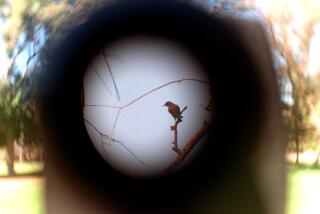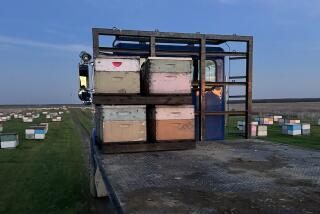Buzzing about the honeybeeâs important place in society
âSweetness and lightâ were qualities the great Victorian critic Matthew Arnold deemed sorely lacking in the culture of his time. (One shudders to imagine what heâd think of culture today!) By âsweetness,â he meant fair-mindedness and civility; by âlight,â insight and understanding.
Although there is no mention of Arnold in Hattie Ellisâ otherwise erudite look at the history of humans and honeybees, she has chosen as her epigraph the very passage from Jonathan Swiftâs âThe Battle of the Booksâ that furnished Arnold with the phrase and her book with its title. Contrasting the hard-working bee, which ranges far and wide to gather nectar for the hive, with the self-involved spider, which spins its insubstantial web out of itself, Swift clearly champions the bees: âWe have rather chosen to fill our hives with honey and wax; thus furnishing mankind with the two noblest of things, which are sweetness and light.â
For much of human history, before the use of sugar, honey was the primary source of sweetness. And when candles were our chief defense against darkness, beeswax was as precious as honey. Early humans, like bears, hunted wild honey, tracking bees to their hives and braving stings to steal the contents, but already in ancient Egypt, some 5,000 years ago, the art of beekeeping was being practiced.
Yet, even as beekeepers developed effective methods of keeping bees, very little was known about what actually went on inside the hives. Before the discoveries of the 17th century Dutch scientist Jan Swammerdam, whose dissections revealed the queen beeâs ovaries, it was widely believed that bees reproduced by spontaneous generation. Also unrecognized was the vital role bees played in pollination. Still, even before the full extent of their benignity was known, bees were known in literature and lore as symbols of diligence, industriousness, orderliness, altruism and public-spiritedness.
Peering into a specially constructed glass âobservation hive,â Ellis, a British columnist and food writer, found herself mesmerized: âI put my ear to the glass and both felt and heard the whirr of life: thousands and thousands of lives wound up like watches, ticking away in collective survival. I blurred my eyes. The bees formed an almost solid material, quietly, steadily seething.... Not repulsive, like the pulsing of maggots on meat. Not a crawling, or scurrying, or wriggling. It had a gentle, purposeful, cohesive movement, impressive and unstoppable in its numbers, like a crowd gathering at a large sports stadium, or a workforce funneling into a factory gate.â
Deftly blending natural history, human history, literature, biography and biology, Ellis provides a graceful survey as entertaining as it is enlightening. The book has something for everyone: enticing descriptions of various kinds of honey for food enthusiasts; engrossing material about the habits, habitats, intelligence and breeding of bees for anyone with an interest in nature; and for those of a literary bent, intriguing accounts of Belgian symbolist poet and playwright Maurice Maeterlinckâs âThe Life of the Beeâ and Sylvia Plathâs âAriel.â (Maeterlinck had been a beekeeper, Plathâs father had kept bees, and at the time of writing âAriel,â she too had started to do so.)
Bees have attracted many remarkable, sometimes eccentric, characters, and Ellis has talked with a number of them. She also provides compelling thumbnail biographies of pioneering scientists and naturalists, including the indefatigable Swammerdam; his British predecessor Charles Butler, who took the crucial step of observing bees instead of relying on tradition and lore; the genial Lorenzo Langstroth, American inventor of the movable hive-frame; and the 20th century monk Brother Adam, whose extensive labors in crossbreeding resulted in the popular Buckfast âsuperbee.â Whether describing how bees make honey, discussing recent diseases and environmental problems that threaten the species or explaining the origins of the infamous âkiller bee,â Ellis is no slouch when it comes to covering the biological aspects of her subject. Oddly, though, she omits the strange and fascinating story of how queens, workers and drones are generated.
For centuries, Ellis notes (drawing on the insights of Juan Ramirezâs âThe Beehive Metaphorâ), the bee was admired as the âsocialâ insect par excellence, selflessly subordinating its individual needs to the welfare and survival of the collective hive. In the first part of the 20th century, the hive and its honeycomb structure inspired innovative modern artists and architects, including Frank Lloyd Wright and Le Corbusier. But, by the centuryâs latter half, in the wake of disillusioning experiences with fascism and communism, a more negative view of collective life took over, as in the Spanish director Victor Ericeâs 1973 film, âThe Spirit of the Beehive.â Whether or not it may be advisable for human beings to emulate bees, Ellisâ book helps us appreciate all that they do for us and the rest of the planet.
More to Read
Sign up for our Book Club newsletter
Get the latest news, events and more from the Los Angeles Times Book Club, and help us get L.A. reading and talking.
You may occasionally receive promotional content from the Los Angeles Times.








